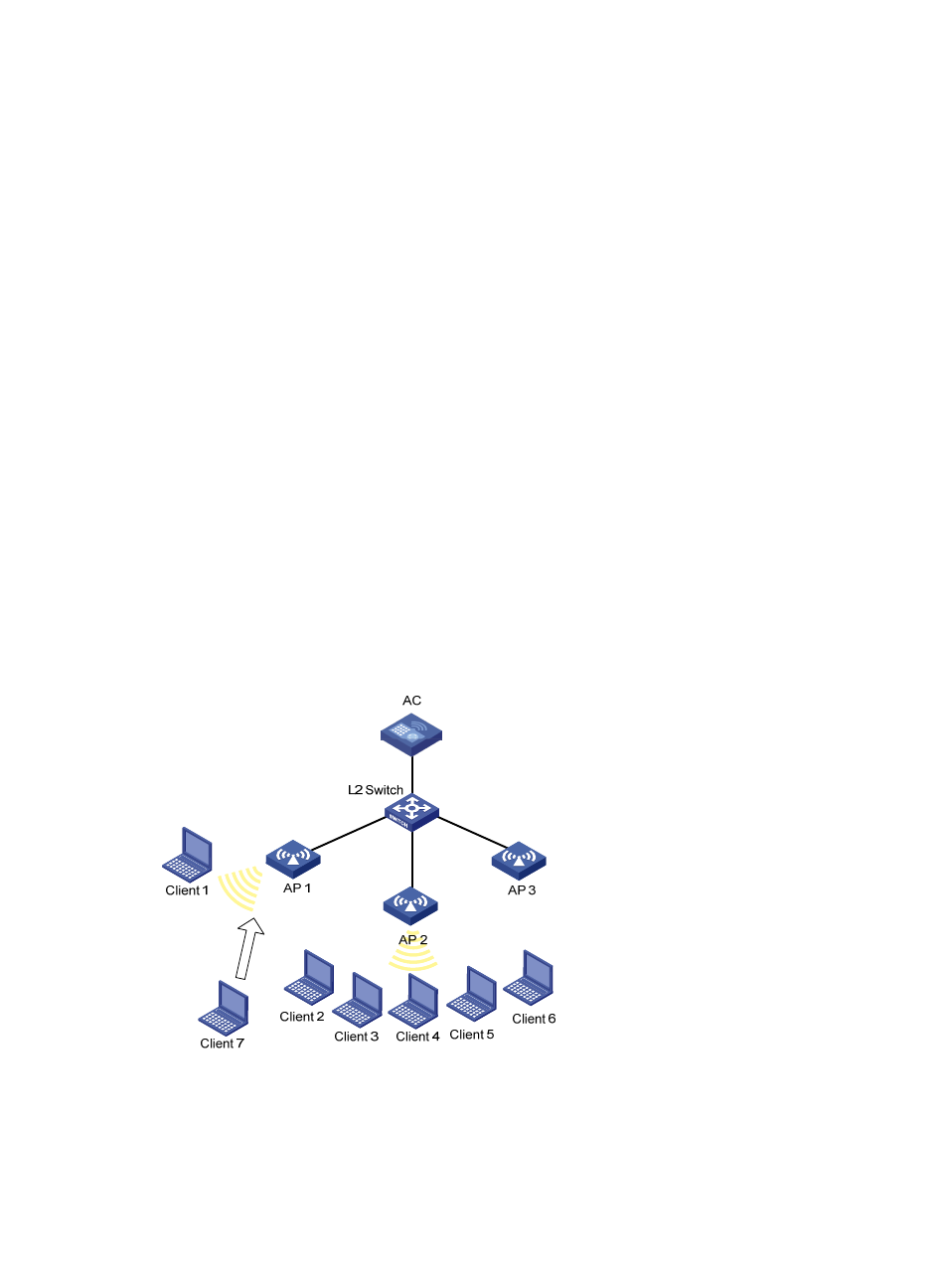Verifying the configuration, Network requirements, Configuration procedure – H3C Technologies H3C WX3000E Series Wireless Switches User Manual
Page 143

131
# Create an AP template named ap2 and its model is WA2100, and configure the serial ID of AP 2 as
210235A29G007C000021.
<AC> system-view
[AC] wlan ap ap2 model WA2100
[AC-wlan-ap-ap2] serial-id 210235A29G007C000021
[AC-wlan-ap-ap2] radio 1 type dot11g
# Bind service template 1 to radio 1 of AP 2.
[AC-wlan-ap-ap2-radio-1] service-template 1
[AC-wlan-ap-ap1-radio-1] radio enable
[AC-wlan-ap-ap2-radio-1] return
Verifying the configuration
Client 1 and Client 2 are associated with AP 1. When the maximum traffic threshold and load gap are
reached on AP 1, Client 3 is associated with AP 2.
Configuring group-based session-mode load balancing
Network requirements
•
As shown in
, all APs operate in 802.11g mode. Client 1 is associated with AP 1. Client 2
through Client 6 are associated with AP 2, and no client is associated with AP 3.
•
Configure session-mode load balancing on the AC. The maximum number of sessions is 5 and the
maximum session gap is 4.
•
Session-mode load balancing is required on only radio 1 of AP 1 and radio 1 of AP 2. Therefore,
add them into a load balancing group.
Figure 69 Network diagram
Configuration procedure
1.
Configure APs on the AC:
# Create a WLAN ESS interface.
<AC> system-view